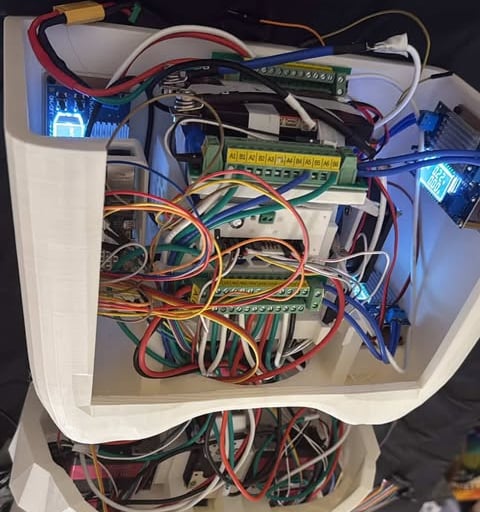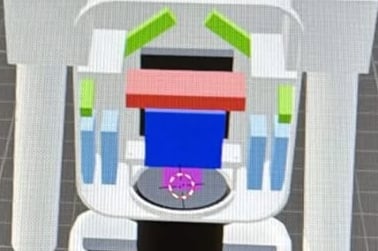electrical Engineering
Before I go over the electronic components, I want to revisit the mechanical aspects of the design.
Each leg uses four 80 kg·cm servo motors—one for the knee, one for the ankle, and two at the hip for pitch and roll motion. A 65 × 65 mm bearing links the hip sections, allowing smooth roll while blocking unwanted yaw.
All parts are 3D printed in PLA (white or black). The thigh, shin, and shoe each weigh about 250 g, making one complete leg roughly 1 kg. An FSR sensor in the sole checks ground contact, and an HC-SR04 near the ankle detects nearby obstacles.
I use a 3S4P Molicel battery pack that delivers 12.6 V at approximately 16.8 Ah.
Other electronic components include:
Three buck converters
Raspberry Pi 5 (8 GB RAM)
PCA9685 servo driver
FSR resistors and an analog-to-digital converter (ADC) chip
BNO08X IMU
Daly BMS
XT Connectors
Fuse Breaker
Three terminal boards
One battery cooling fan
One Raspberry Pi cooling fan




Battery Pack:
I use a 3S4P Molicel pack that outputs 12.6 V at around 16.8 Ah. It powers the entire system and provides consistent current for all motors and sensors.
Buck Converters:
One converts 12.6 V to 5 V for the Raspberry Pi 5. Another steps it down to 10 V for the two torso servos. The third supplies 8.4 V for the 80 kg servos used in the legs.
Raspberry Pi 5 (8 GB):
The main controller and brain of Spookey. It handles all the logic, coordination, and sensor input.
PCA9685 Servo Driver:
Used to control multiple servos at once with smooth, accurate PWM signals.
FSR Resistors and ADC:
The FSR sensors connect through resistors and an analog-to-digital converter, which helps translate pressure values into readable data for the Pi.
BNO08X IMU:
Tracks Spookey’s balance and orientation in real time, helping the robot stay upright and move naturally.
Daly BMS:
Protects the battery from overcharging, over-discharging, and high current draw.
XT Connectors:
Used for clean, secure, and quick power connections between the battery, buck converters, and main circuits.
Fuse Breaker:
Prevents damage by cutting power instantly in case of an overload or short circuit.
Terminal Boards:
Used for organizing power and signal lines, keeping wiring cleaner and troubleshooting easier.
Cooling Fans:
One fan cools the battery compartment while another keeps the Raspberry Pi from overheating during long sessions.
Contact
swayamrathod@sway.bet
(404) 910-6857
